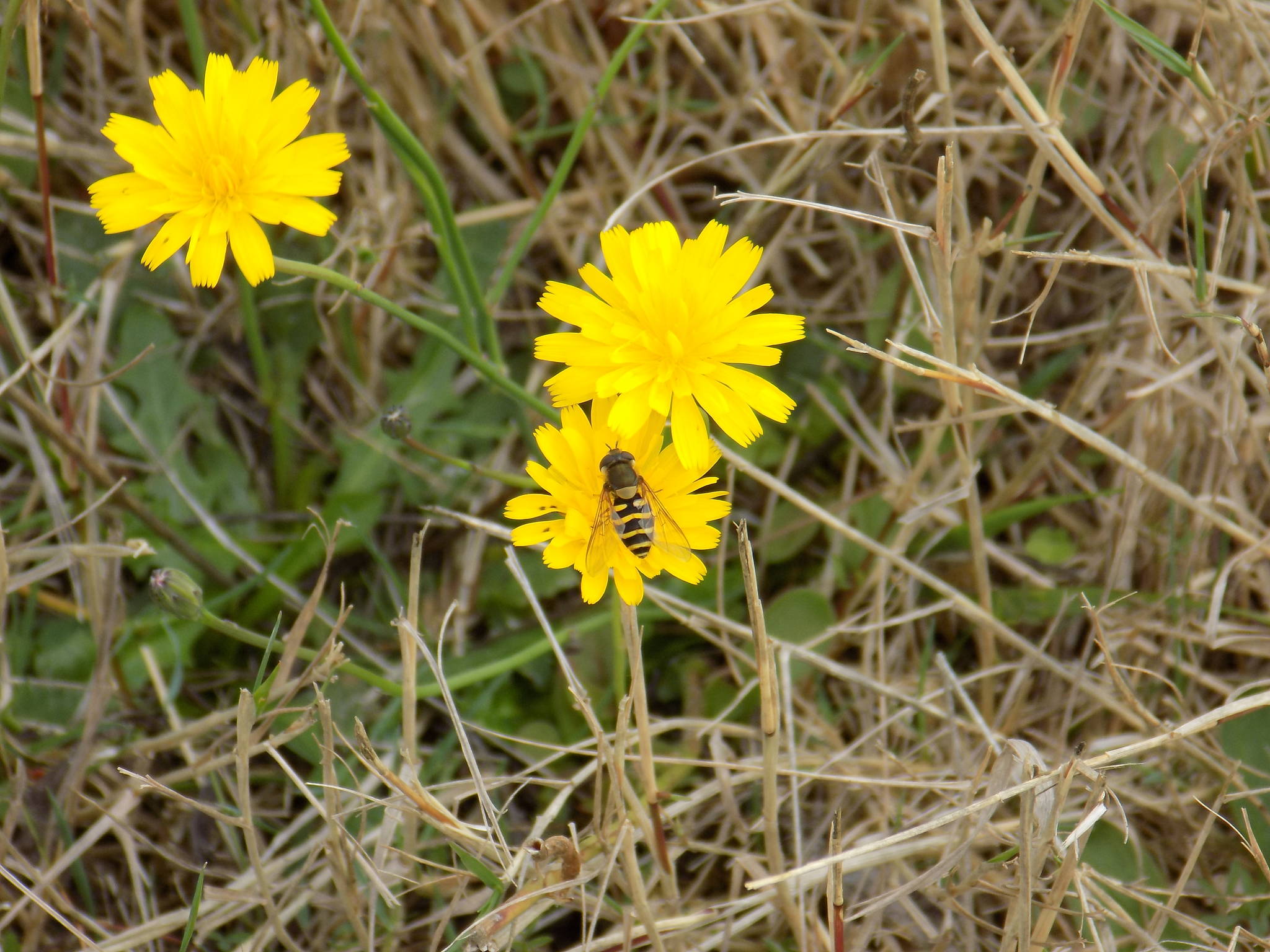Submitted by Kwiaht
The conservation nonprofit Kwiaht has launched a campaign to inventory, monitor and protect the health of the islands’ bees and other pollinators, and is looking for help from islanders to document more species and make their own gardens and farms pollinator-friendly. As a first step, Kwiaht has published an illustrated “Guide to Native Pollinators of the San Juan Islands” online. It can easily be found by Googling “sjipollinators” and features photographs and descriptions of 72 wild native bees and hover-flies that pollinate the islands’ crops and wildflowers.
Researchers have so far identified over 200 species of wild native bees and flower flies in the San Juan Islands and confirmed that in the islands, as in most other parts of North America, most pollination is done by wild native bees and flies rather than honeybees.
“Honeybees are farm animals like cattle, they make honey instead of milk,” said Kwiaht director Russel Barsh, who has spent hundreds of hours since 2011 photographing the pollinators of native wildflowers and gardens. “They have to be fed and housed by people, and their numbers are barely a small fraction of the number of bees and flies that are already out there, doing the work.”
At the same time, Barsh said there is a real danger that domesticated bees, including mason and leafcutter bees sold and shipped from other states, will introduce parasites and diseases that could severely reduce the islands’ wild bees. Then, of course, pesticides, but the greatest threat, Barsh said, is an irresponsible introduction of non-native bees that compete with wild bees for food, and at the same time destruction of the habitat that wild bees need, such as brushy areas and hedgerows.
“Every time the county clears hedgerows, it’s killing native bees,” he said.
To be eligible for rewards, including books and art about bees and hover-flies, visit “Guide to Native Pollinators in the San Juan Islands.” Then take a close look at the pollinators in your own garden, orchard or pasture. Try to recognize those that aren’t honeybees or bumblebees and enter the contest described on the website, where islanders are asked to take a good quality photograph of an interesting pollinator or catch one to submit for identification.
Kwiaht also encourages islanders to identify whether their property is pollinator friendly. Key criteria for pollinator-friendly landscaping, according to Barsh, are:
• A hedgerow that includes flowering shrubs such as snowberry, rose and berries, and an unmown brushy area with tall grass and wildflowers (even dandelions will do). These patches are good nesting and foraging habitat for native bees as well as hover-flies.
• A few trees surrounded by undisturbed leaf litter, at least one undisturbed decaying log or old woodpile, or a mossy rock pile. These habitats attract bumblebees and other wild bees.
• Garden flowers with seasonal yellows, whites and blues that include some composites in the aster family, some flowers with umbels in the carrot family, and strong-smelling herbs in the mint family. A mixture of native wildflowers and familiar ornamentals will give you a longer and more consistent flowering season each year. Avoid seed mixes that claim to be good for bees – they are probably not formulated for Northwest conditions or native bees.
• No aerial spraying of pesticides, herbicides, or fertilizers, including products that claim to be “green” or “earth friendly” but typically contain oils and detergents that are toxic to bees and hover-flies. Remember that the larvae of most of our hover-flies eat aphids, so if you spray aphid clusters, or squish them indiscriminately, you will probably kill a lot of pollinators too.
Barsh explained that one advantage of permaculture, or perennial flowers and food plants, is reducing tillage, which destroys wild bee nests.
“Combining a permaculture area, such as an orchard, with alternating small blocks of tilled fields and flowering hedgerows is perfect for ensuring abundant pollinators,” he said.
Kwiaht researchers are available to speak to garden clubs and other groups about native pollinator ecology, recognizing native species, and landscaping for pollinator sustainability. Plans are also being made for a winter 2018 backyard conservation course on Orcas. Kwiaht’s program on pollinator diversity and health is supported by the Bureau of Land Management, the Satterberg Foundation and the Orcas Island Community Foundation.



